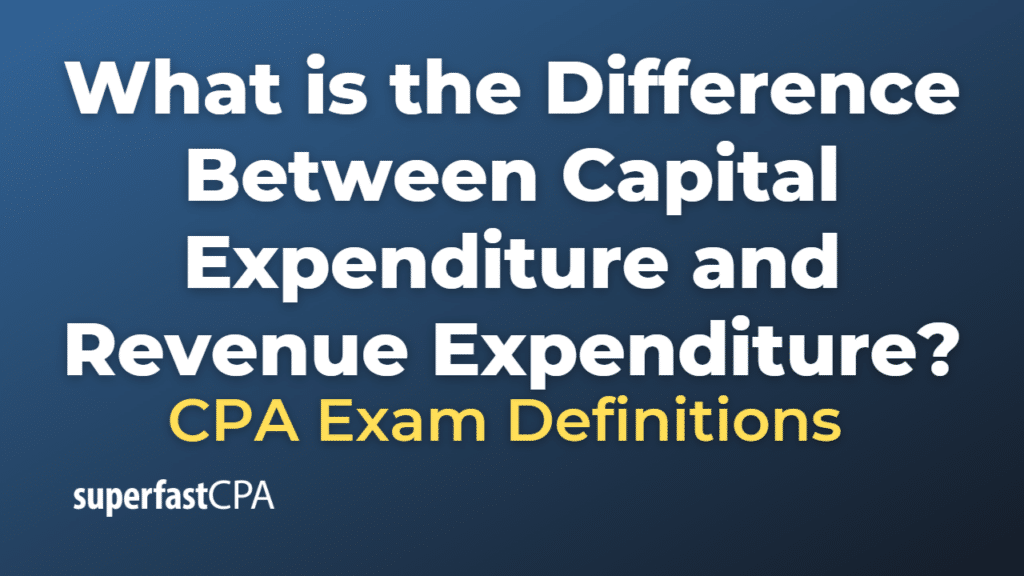Difference Between Capital Expenditure and Revenue Expenditure
Capital Expenditure (CapEx) and Revenue Expenditure (also known as Operating Expenditure or OpEx) are two categories of business expenses, each with different implications for financial reporting and tax treatment:
- Capital Expenditure (CapEx): This refers to the money spent to acquire, upgrade, or improve long-term assets such as property, buildings, or equipment. Capital expenditures are considered investments in the business that will provide benefits over a long period, typically more than one year. On the balance sheet, CapEx increases the value of the company’s assets. On the income statement, rather than being deducted in the year they are incurred, capital expenditures are depreciated or amortized over their useful life.
- Revenue Expenditure (OpEx): This refers to the money spent on the day-to-day running of the business. These expenses are necessary for the business to function but do not result in the creation of a long-term asset. Examples include salaries, rent, utilities, maintenance, advertising, and other selling and administrative expenses. These expenses are fully deducted from revenue in the year they are incurred to calculate net income on the income statement.
In summary, capital expenditures are for long-term assets that will benefit the company over several years, while revenue expenditures are for immediate costs that keep the business running on a daily basis.
Example of the Difference Between Capital Expenditure and Revenue Expenditure
Let’s consider a hypothetical company, “AutoMaster Cars Inc.” which manufactures automobiles.
Capital Expenditure (CapEx):
AutoMaster decides to invest in a new manufacturing plant to increase its production capacity. The cost of constructing this new plant is $10 million. This expense is a capital expenditure because it results in the acquisition of a new long-term asset – the manufacturing plant – that will benefit AutoMaster for many years to come.
This $10 million will not be deducted immediately from the company’s earnings. Instead, it will be capitalized (recorded as an asset on the balance sheet) and then depreciated over the plant’s useful life, let’s say 20 years. This means each year, $500,000 ($10 million divided by 20 years) will be charged as depreciation expense on the income statement.
Revenue Expenditure (OpEx):
Now, consider the costs AutoMaster incurs to operate its existing manufacturing plant. These include the cost of raw materials to produce cars, wages for factory workers, electricity costs to run the machinery, and routine maintenance costs for the plant and equipment.
These are all considered revenue expenditures because they are necessary for the day-to-day operations of the business but do not result in the creation of a long-term asset. These costs are deducted from the company’s revenues in the year they are incurred when calculating net income.
In this example, the $10 million spent on the new plant is a capital expenditure, while the costs of raw materials, wages, electricity, and maintenance are revenue expenditures.













